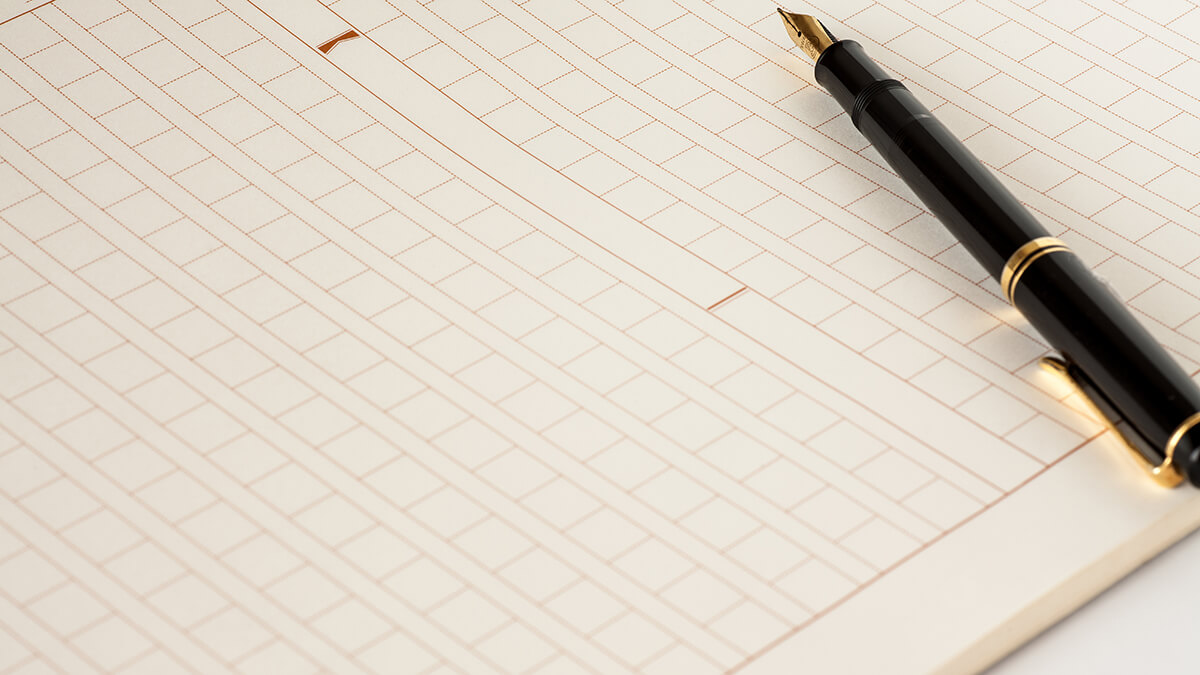Tips to Improve Your Japanese Penmanship

When studying the Japanese language, it’s more likely that you’re also practicing to write Japanese characters. And if you just started, you probably know how challenging it could be. There’s a big chance that your handwriting skills (using a pencil, a pen or a brush) are on the decline because of today’s digital advancements, which have made it easier for everyone to type characters instead of writing them. To avoid that, you need to practice and improve your Japanese penmanship.
Table of contents
Tips to Improve Your Japanese Penmanship

Writing Japanese characters is as tricky as learning how to pronounce them, for the modern Japanese is written using a mixture of three different scripts: Kanji, Katakana, and Hiragana. Kanji are Chinese ideographic symbols with over a thousand characters, while Katakana and Hiragana are “Kana” or phonetic alphabets that have 46 characters each.
Kanji is used to write lexical elements such as nouns, verbs, and adjectives. Hiragana, which has rounded letter shapes, is used to write grammatical parts of sentences such as auxiliary verbs and suffixes of nouns. And Katakana, which has angular letter shapes, is used to write foreign words and for emphasis purposes.
There are rules for when to use these scripts, and there are many exceptions to it. Let’s take a look at some of these rules with some tips on how to improve your Japanese penmanship.
Improving Your Japanese Penmanship in General

Before we go to some rules in writing modern Japanese, here are some general tips to improve your penmanship:
Use a “Correct” Grip When You Write
Sure, there are many ways to hold a pen, but there’s only one way to grip it correctly. To grasp a pen accurately, pick up the pen with your thumb and index finger. Your thumb and index finger will hold the pen in place. Grip the pen about lightly 1/3 of the way from its tip. Rest your middle finger under the pen and position your ring and pinky fingers underneath it.
With a proper grip like this, you can put less stress on the muscles and joints of your hand. Practice using this grip until it feels more natural to you.
Use an Appropriate Amount of Pressure
A firm grip of the pen can help you write smoothly and maintain total control of your whole writing process. Apply a proper amount of pressure on your hold to transfer the ink properly to the paper. Make sure to balance your grip and the pressure so that the ink won’t splatter on the paper.
Write on the Line
When practicing, don’t write on a blank sheet with no lines. Try to practice to write in sheets that have lines or grids. Writing on the line is also one of the best ways to keep the height characters the same.
Writing Kanji and Kana

Here are some basic rules to remember to improve your Japanese penmanship:
Use the Correct Stroke Order
Writing with the correct stroke orders of Japanese Kanji and Kana is like writing proper English cursive. The two Kana scripts are simple. They both have a maximum of 4 strokes for each, while Kanji has many different strokes.
To write Kanji, you need to start your strokes from left to right and top to bottom. Make sure to do the horizontal strokes first before the vertical ones. But, there’s an exemption to this rule when a character has a vertical line with corresponding symmetrical characters. In that case, you write the vertical line first.
When writing boxes, you only need to do it with three strokes. Your first stroke is for the left vertical with an upward stroke, followed by the second stroke for the top horizontal to the right, and the last stroke for the downward right vertical and bottom horizontal to the left. Enclose contents on three sides first, do the inside contents then end it with the bottom stroke of the enclosure. Do bottom side enclosures last.
With diagonal strokes, do the right diagonal first before the left one. If the diagonal strokes cross, then do the right diagonal first before the left one. Also, strokes that traverse through a lot of other strokes go last.
Dots and dashes should always go last. The exemption to this is when the dot is at the very top. In that case, do the dot first.
There are many exemptions when it comes to writing Kanji characters, but be sure to follow these strokes to be sure.
Write in Boxes to Practice
Kanji characters, initially, are pictures of what they represent. But, when people started to use it often, it got confusing. Later on, they were written in squares to keep everything in uniform. With this, sheets with grid lines became one of the best tools to practice writing Kanji. You can also practice to write it in graph papers.
Write Big
When practicing to write Japanese efficiently, start with writing the characters big. It will be easier for you to get comfortable first with the proper strokes to, later on, write them in a smaller format.
Print a Trace Out and Practice More
To make practicing the strokes easier, print a trace-out, and practice the strokes by tracing the lightly printed characters. You will master the strokes faster with this technique.
Conclusion
Improving your Japanese penmanship is an essential asset as a young professional, especially if you are not a local in Japan. We hope that this guide helped you on your way to mastering Japanese writing. Although you can learn it to greatly benefit your studies, you can also pick up the skill of mastering the art of Japanese penmanship.
Motto Japan, the community platform to support foreigners with the foundation for life in Japan, including Japanese study, job opportunities, and housing service. Motto Japan Media will provide a wide variety of information for Japanese fans all over the world, to create a cross-cultural environment and enrich the life of foreign residents in Japan!













Leave a Reply